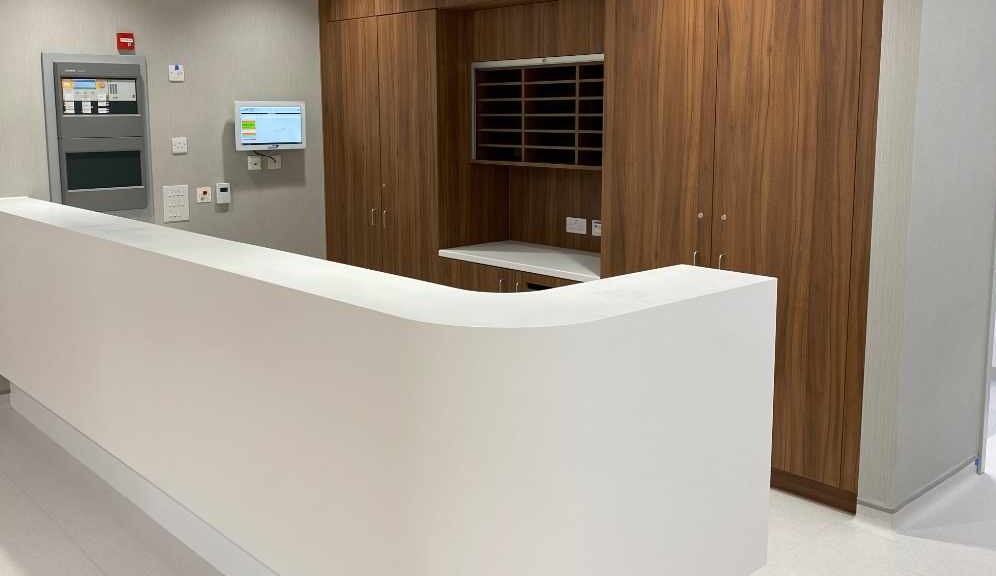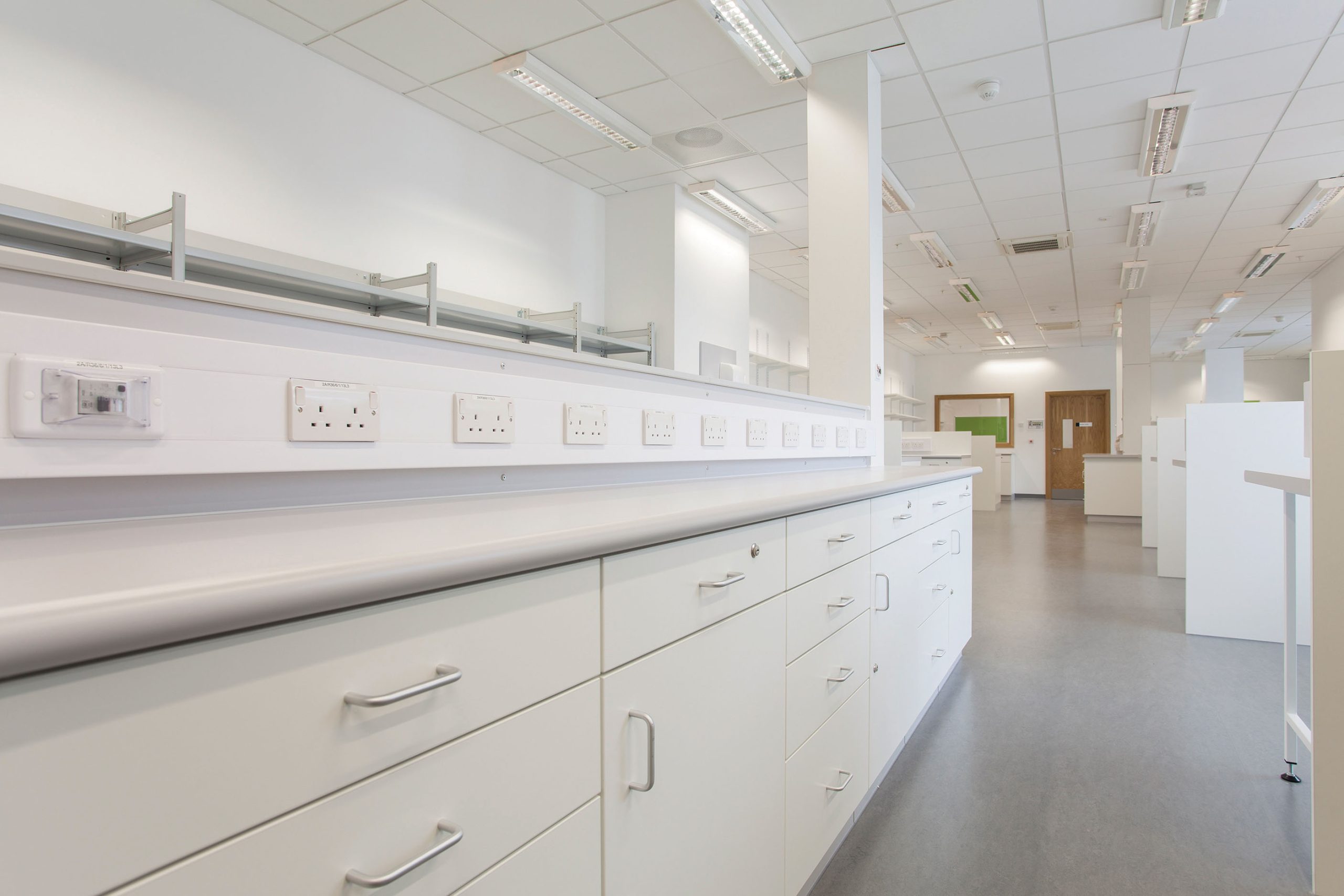You are probably talking about storage units, but we know what you mean. It’s a…

From grand entrances to modern hubs – a history of the reception desk
Believe it or not the reception desk, a seemingly ordinary fixture in today’s hospitals, offices and hotels, has a rich history intertwined with the evolution of business itself. From its grand beginnings to its modern-day functionality, the reception desk has served as a point of first impression, a gateway to communication and a symbol of changing workplace dynamics, writes Tony Huggins, managing director of David Bailey Furniture Systems Ltd.
Pinpointing the exact origin of the reception desk proves challenging. However, historical references and educated guesses offer a glimpse into its early forms. Some sources speculate that the grand entryways in medieval guildhalls, where members greeted visitors and conducted business, might be considered early precursors to reception areas.
Medieval guilds were essentially associations of skilled artisans and merchants in a particular trade. They often had dedicated guildhalls – buildings that served as workplaces, meeting spaces and sometimes even residences for members.
These guildhalls typically featured grand entryways. While not reception desks in the strictest sense, these entrances likely served a similar purpose. Guild members would greet visitors, inquire about their business and potentially direct them to the appropriate person within the guild.
It’s important to note at this stage that there are some key differences. Guildhalls were primarily communal spaces for members, with less emphasis on controlling access or managing external communication compared to the role of a modern reception desk, but things were about to change.
With the increasing complexity of businesses in the 18th and 19th centuries, the need for dedicated personnel to manage entrances and communication probably gave rise to the reception desk as we know it. Early receptionists, often clerks or secretaries, assumed the role of welcoming visitors, directing inquiries and facilitating communication within the organisation.
Companies grew larger during this period and the need for dedicated personnel to manage communication and visitor flow became increasingly important. As the role of the receptionist solidified, dedicated areas for them to work emerged. These, in the beginning, were simple desks or tables positioned near entrances, potentially marking the beginning of the reception desk as we know it.
The grand reception desk
By the late 19th century, the reception desk emerged as a prominent feature in grand office buildings. These desks were often made from Mahogany or Walnut. These sturdy and visually appealing hardwoods conveyed a sense of authority and sophistication. Ornately designed carvings, intricate details, and imposing heights further emphasised the company’s power and prestige. These grand reception desks served not just a functional purpose, but also projected a powerful image to clients and visitors.
The 20th century witnessed a significant transformation in the design and purpose of the reception desk. As modernist design principles gained popularity, reception desks adopted a more streamlined and functional aesthetic. Simpler forms, uncluttered surfaces, and the introduction of new materials like steel and glass became prominent.
The reception desk became a central hub for managing communication and visitor flow. Switchboards, intercom systems, and mailboxes became integrated elements, enhancing functionality.
By the mid-20th century, we could see the emergence of a corporate culture and reception desks began to reflect this shift. Larger reception areas with prominent desks projected a professional and welcoming image.
Today’s reception desk continues to evolve to reflect the changing nature of work. Here at David Bailey Furniture, we manufacture reception desks that are accessible by wheelchair users in hospital, health centres and other key locations. Legislation, such as Part III of the Disability Discrimination Act (DDA) and the revised British Standard BS8300, all point to the need for design to be more inclusive. These reception desks feature rounded surfaces for bacteria control and easy cleaning.
We are also aware of the need for technology integration. Reception desks must now seamlessly integrate technology like touchscreens and digital displays, streamlining visitor check-in and enhancing communication.
Multifunctional design must also ensure that modern reception desks serve multiple purposes, incorporating areas for greeting visitors, co-working, or providing refreshments. We also see a trend where environmentally conscious businesses are opting for reception desks made from recycled materials.
The future of the reception desk
As technology advances and remote work becomes more common, the traditional role of the reception desk might seem threatened. However, the reception desk is likely to continue adapting. We might see a combination of physical reception desks and virtual receptionist services becoming the norm, catering to a hybrid workforce. The reception desk could also evolve into a welcoming space, offering visitor orientation, facilitating connections and creating a positive first impression.
As we can see, the reception desk has come a long way from its grand beginnings. It has served as a symbol of authority, a hub for communication and is now adapting to the ever-evolving work landscape. The future reception desk might be a more welcoming and experience-oriented space, but its core purpose – to greet, direct, and connect – will likely remain constant.








